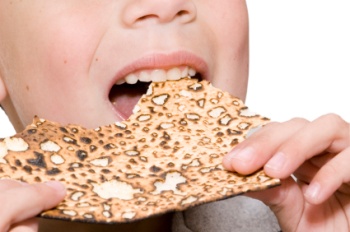
Jewish, Resources
Make sure your child has a Seder plate. Before the seder begins show him or her where each item belongs on the seder plate.
Give your child a haggadah not one with just words but with many, many pictures and just a few words.
Make a visual schedule of the Passover seder so your child knows what to expect and when to expect it.
Use passover boardmaker style pictures from jgateways.org to let your child visualize the story of Passover.
not one with just words but with many, many pictures and just a few words.
Make a visual schedule of the Passover seder so your child knows what to expect and when to expect it.
Use passover boardmaker style pictures from jgateways.org to let your child visualize the story of Passover.
Passover brings many new foods and many new smells. On Passover we refrain from eating any leavened products derived from wheat, barley, oat, spelt or rye. So that rules out bread, cakes, pizza and much more. Many different types of food are made which causes some unfamiliar smells. One of the strongest smells is the Maror - Horseradish Root. Prepare your child for the different smells they may encounter especially when it comes to the maror
The seder is full of new objects to touch and feel.
As part of the seder we dip a vegetable into salt water. Make sure your child gets a chance to do some dipping as well
Matzah comes in many forms. Try and get some Shmurah Matzah for a different look and feel. There is a part of the Seder when we break the middle matzah. Make sure you give your child the opportunity to break their matzah in half!
Before we eat the Matzah we wash our hands. For many children with Sensory Processing Disorder playing with water has a great calming effect.
Korach Time is sandwich making time. Help your child create a sandwich of Matzah, Marror and a little bit of Charoset.
To keep busy during the seder make sure to pick up some Passover Toys .
.
Traditional Passover songs are usually sung by the seder. Try and practice some of the more popular ones ahead of time so they are more familiar and more comfortable. Aside from the singing, your child will hear some of the traditional Hebrew prayers being recited at the seder
There are a number of different foods eaten on Passover. If you have a child who is a picky eater, ask if you can bring foods you think your child might eat or have them try some of the foods ahead of time such as Matzah, gefilte fish, charoset or even horseradish. If they decide that they don’t like it, you won’t feel obligated to make them try it. Better yet, they will have gotten that fear of tasting it out of the way ahead of time and may enjoy the meal all the more so.
The vestibular system contributes to balance and to the sense of spatial orientation. It is the sensory system that provides the leading contribution about movement and sense of balance. As we drink the four cups of wine (or grape juice) and eat the Matzah it is customary to lean as a sign of freedom. Show your child how your are leaning and ask him or her to copy you Make sure that your child understands just how far they should lean. Provide them with an armchair to limit them from encroaching on someone else’s space.
This sense refers to how we move and where our limbs are in relation to our own bodies. Keep in mind that seder is probably the longest time your child will sit at a table all year. They are not expected to sit that long at a desk, even at school. Provide them opportunities to get up from the table and walk around.
Have your child help serve food or clear the table.
Ask your child to act out being a slave by carrying a heavy bag of books over their shoulder and pretending that it is bricks.
Act out the plagues such as jumping like frogs or falling over like cattle.
Re-enact the splitting of the sea. Hold up blue sheets and have children walk through them.


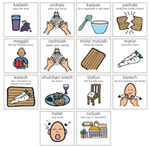 Sight
Sight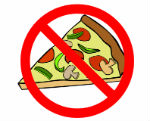 Smell
Smell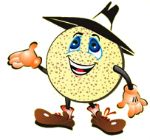 Touch
Touch Hearing
Hearing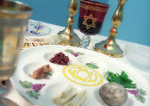 Taste
Taste Vestibular
Vestibular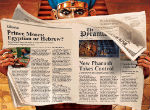 Proprioceptive
Proprioceptive

